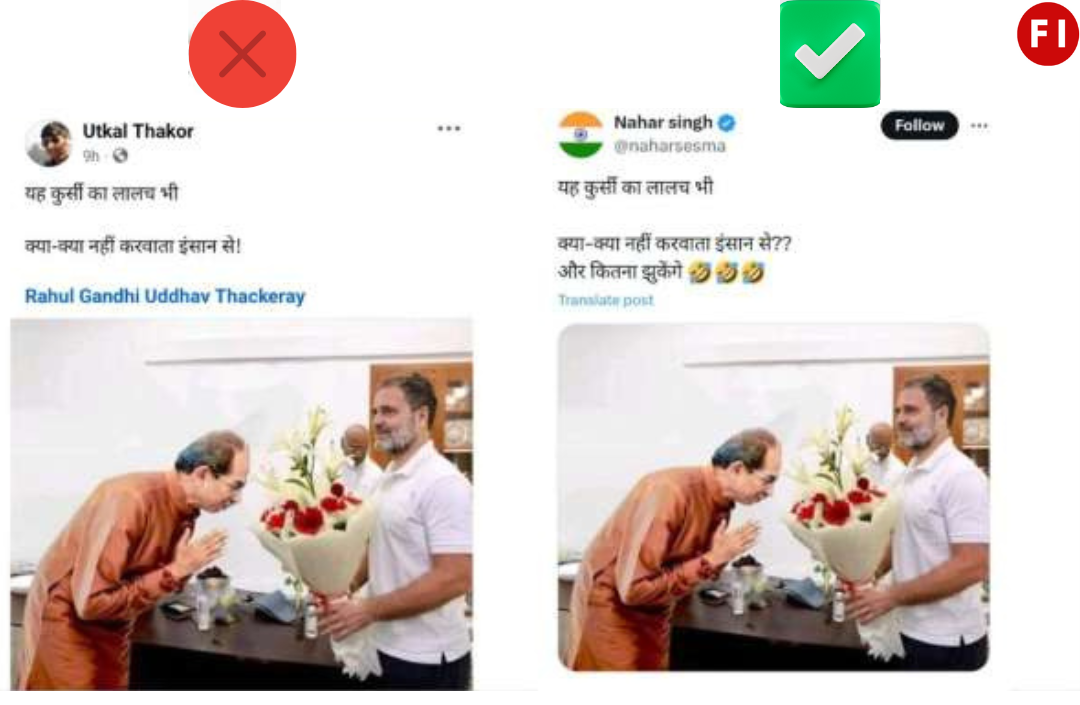In a world where social media can distort reality at the speed of a click, a recent image of Uddhav Thackeray purportedly bowing to Rahul Gandhi has captured significant attention. But before you take this viral image at face value, let’s delve into the truth behind this claim.
The Claim: The image in question portrays Uddhav Thackeray seemingly bowing down to greet Rahul Gandhi, with captions suggesting this act is a testament to political desperation. The message is clear: a powerful figure bowing down signifies a questionable thirst for power.
The Truth: Our fact-checking investigation reveals that this claim is not just misleading—it’s entirely false. The viral image has been manipulated to create a misleading narrative.
Here’s the Truth:
- Exposing the Manipulation: Fact Check India’s meticulous investigation uncovered that the image in circulation has been doctored. On August 8, Shiv Sena (UBT) shared an authentic tweet showing Thackeray bowing to Delhi Chief Minister Arvind Kejriwal’s family, not Rahul Gandhi. The attire Thackeray is wearing matches exactly with the outfit seen in the viral photo.
- The Real Context: A closer look at social media reveals another tweet from August 7, showing Rahul Gandhi in the same outfit and holding the same bouquet as depicted in the viral image. This alignment suggests the photo of Thackeray and Gandhi was edited to fit a fabricated narrative.
The Verdict: The viral photo misrepresents Uddhav Thackeray’s actions, portraying a false scenario of political submission. In reality, Thackeray was simply paying respects to Arvind Kejriwal’s family.
Why It Matters: In an era of digital deception, verifying the authenticity of viral content is crucial. Misinformation not only skews public perception but also undermines trust in credible sources.
For All Social Media Fans
Misinformation refers to false or inaccurate information that is unintentionally spread. It can occur due to misunderstandings, misinterpretations, or errors. Misinformation is often shared innocently, without malicious intent.
Examples of misinformation include:
- Rumors: Spreading unverified stories or claims.
- Mistaken Identity: Incorrectly attributing an event or statement to the wrong person.
- Outdated Information: Sharing facts that were once true but have since changed.
What You Should Do: Before accepting and sharing viral images or claims, always check the facts. Rely on trustworthy fact-checking sources like Fact Check India to ensure you’re not contributing to the spread of misleading information.
Stay vigilant, and let’s keep the digital world truthful and transparent.

